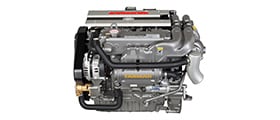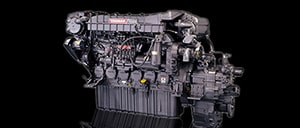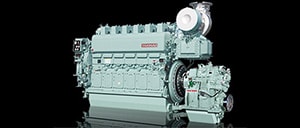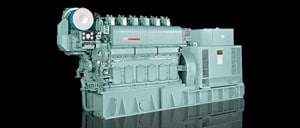Information
HB model: the world’s first commercially viable small diesel engine
February 11, 2020
YANMAR America
After a bitter struggle, the triumph of the “World’s First”.
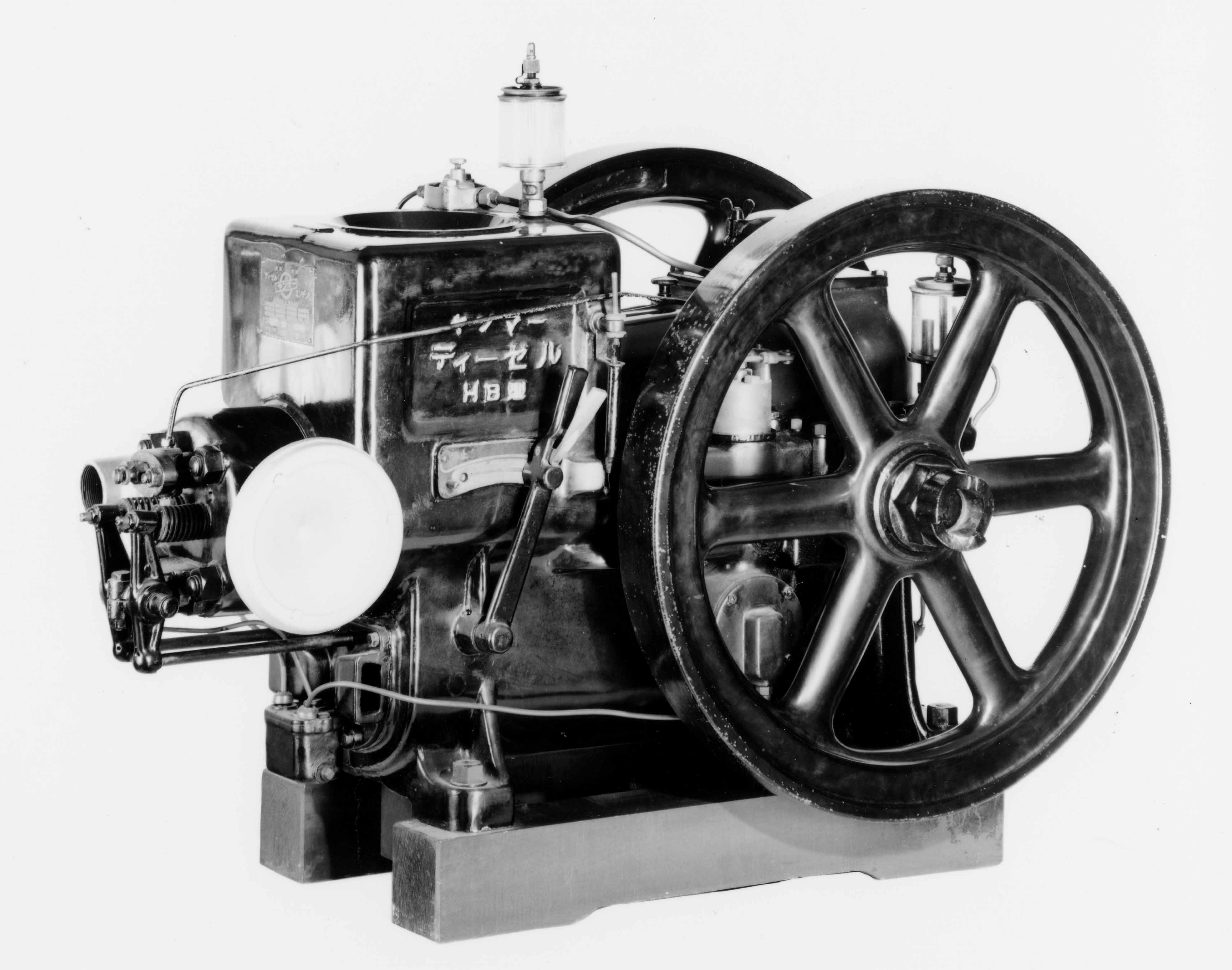
President Yamaoka had made tours of inspection of the major state-of-the-art factories of Europe. In comparison with those facilities, when he looked at his factory for the first time in months, it seemed desolate and miserable. Would it be possible to develop a small diesel engine—a type that no one else in the entire world had been able to create? Upon returning to Osaka, such doubts flitted through his mind. Still, he decided that the only way to achieve his goal of reducing the heavy labor of the farmers via a safe, economical power source was to attack the problem simply. The ultimate development objective was to build an agricultural-use, portable 3 hp diesel engine. Given the economic circumstances of small farmers, it was all-important that the engine uses cheaper heavy oil as fuel. President Yamaoka himself actively led the development team composed of three young engineers. They began designing and experimenting with prototypes based on the latest knowledge they could gain from the fuel injection pump that was produced by Deckel and the diesel engines he had purchased in Germany. Diesel is an internal combustion engine which compresses the air inside a cylinder and heats it so that the atomized fuel inside combusts spontaneously. For both large-size and small-size engines, the principle should be identical, but because the combustion conditions differ, merely reducing the scale of the engine is insufficient. Even in terms of the combustion chamber, there was a difference in conditions between the small and large engines. If you attached a pre-combustion chamber to raise combustion efficiency, you needed to consider several dozen ways of combining the capacity with the main combustion chamber.
There were many issues like this, and the only way to proceed was to solve them one by one. Leading engineers around the world had tackled these troublesome features and found them impossible. Beginning in July 1932, they toiled night and day, immersed in development, but made very little headway. Toward the end of September, they finally rejoiced at completing a 4-cycle 3 hp prototype diesel, but when they started it up, vast clouds of black smoke poured out, turning everything around it black. The development team stayed in the factory day and night trying to make improvements, but they were unable to solve the problem. After repeated urging, the Schluter company in Germany finally shipped the prototype they had commissioned, but it proved of little use in subsequent development. At the end of the year, more engineers, with experience in dealing with large-scale diesel engines, were invited to help the team. Despite this assistance, by the end of the following spring, there were still no signs of future progress.
In contrast with the snags that were impeding the development of small engines, the mid-size diesels had reached a technical level that allowed them to be put on the market. In January 1933, they completed prototypes of the vertical 2-cycle DH model (1 cylinder, 25 hp), followed by the 2-cylinder DJ model (50 hp) and the 3-cylinder DK model (75 hp). In June of that year, they began production of the vertical 4-cycle DD model (10–12 hp), expanding their line up one at a time.
Even then, President Yamaoka did not set aside his desire to produce a small engine. The second summer rolled around, but he remained undiscouraged and spurred his engineering group to press onward. To the new company employees, he earnestly advocated the social benefits that would result from the creation of a small diesel engine. However, they could not continue pouring money into research with no end in sight, no matter how enthusiastic they were. In due course, the bank with which they had an account became reluctant to extend further loans. Even President Yamaoka began to lose hope. He had exerted himself to the fullest to develop such an engine with his own hands, but as an entrepreneur, he began to wonder whether he might be making a fatal mistake. Was he putting the company into debt and exhausting his employees to no avail? By late September, he finally decided to suspend development. He gathered his engineers together and made an announcement. “For more than a year, we have made great efforts over and over again, but prospects are dim. I was wrong to think that a nobody like me could somehow build the first small diesel engine in the world. For the present, I’m giving up on the diesel. I’m giving each of you 200 yen. I hope that you will use it to go to the hot springs at Arima or Shirahama and recover from your summer fatigue.” (Watashi no Rirekisho)
However, not a single member of the group headed for a hot spring. On the contrary, the engineers dedicated more energy to reworking the designs and prototypes. Seeing this, President Yamaoka changed his mind and once again began to devote himself to research. Morning came on December 23. When President Yamaoka arrived at work, his engineers, eyes blood-shot from working through the night, rushed up to him. “The engine is working!” “It’s running!”
Running to the workshop at the rear of the office, he saw the prototype small-size diesel engine running smoothly. The black smoke, which had been the toughest problem, was gone. The engine was designed for an output of 3 hp, but with a load, the output reached 5 hp. It worked.
Confident that they would be successful, President Yamaoka called the contact person at his bank to tell him the news. In no time at all, the bank sent a congratulatory cask of sake wrapped in a rush mat to celebrate their success.
He called the engineers to come and enjoy a toast of sake together. But they didn’t respond. When he went to the workshop to see what was going on, he found them gathered around the engine with handkerchiefs pressed to their eyes. These men, who had overcome numerous failures and enormous pressure and finally reached the day they had dreamed about, were unable to suppress the emotions that welled up from deep inside. Their shoulders shook as they shed tears of gratitude. Seeing this,
President Yamaoka recalled the 17 months of hard struggles. Self-confidence and fear are two sides of the same coin. His team had finally accomplished something that no one else in the world had done. Before he realized it, tears were streaming down his cheeks as well. Just then, he heard the sound of a bell ringing along the main street nearby. It was the bell of a newspaper seller passing out an extra edition announcing the birth of the Emperor’s first son, Crown Prince Akihito (the current Emperor). Deeply moved, President Yamaoka proclaimed, “Yanmar’s small diesel has been born on the same day as the Crown Prince. This is a promising sign that we will always remember.” (Watashi no Rirekisho) The company later established this day as Diesel Commemoration Day. The completed engine was named the HB model. Later on, the model gained a nickname “yokosui,” which originated from “yokogata suirei” (“horizontal and water-cooled”).
- Note: Information contained in the news release is valid at the time of publication and may differ from the most recently available information.





